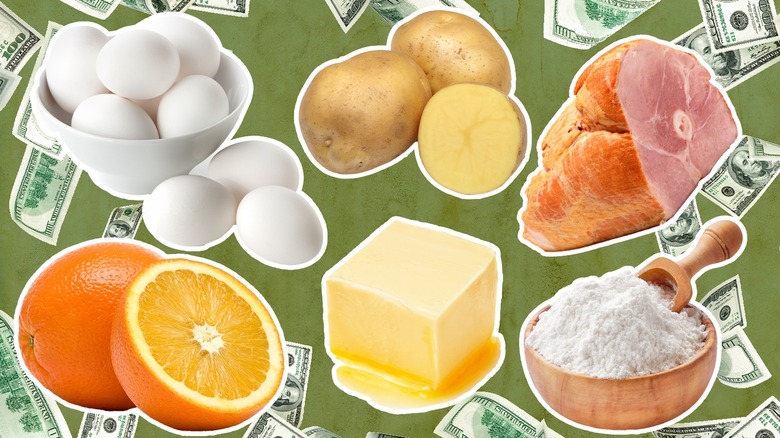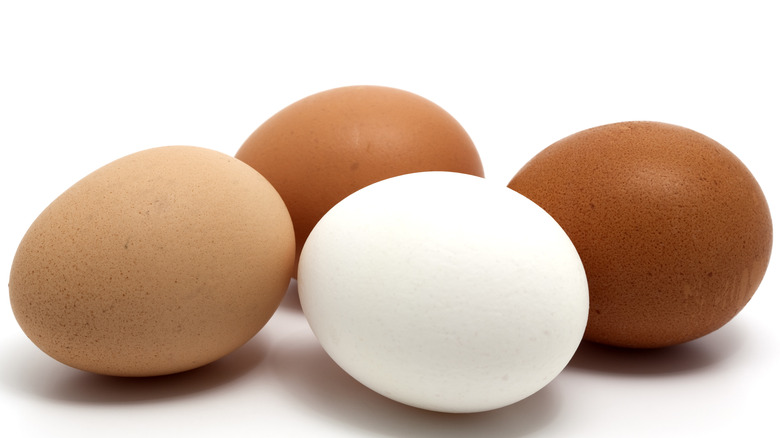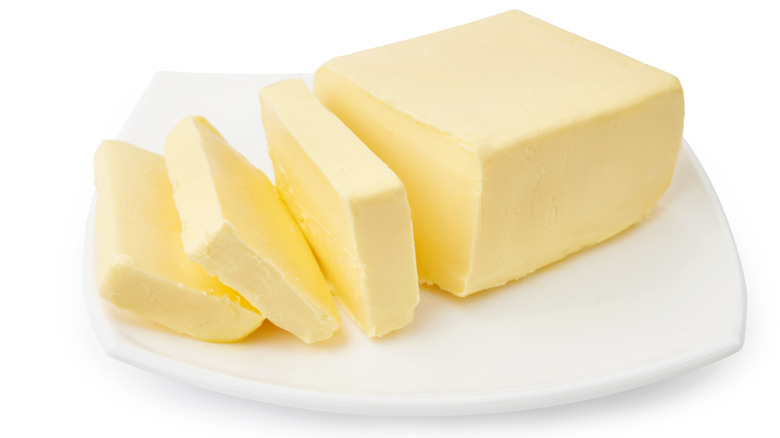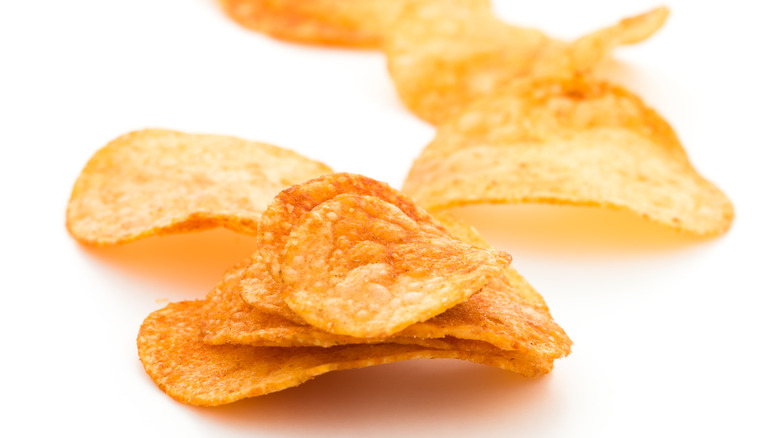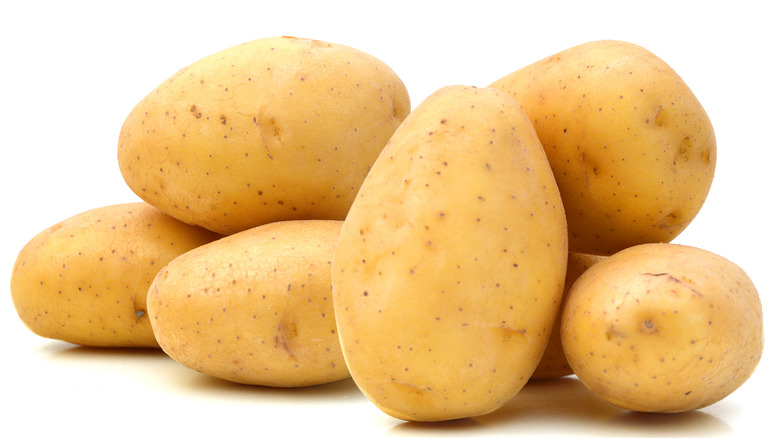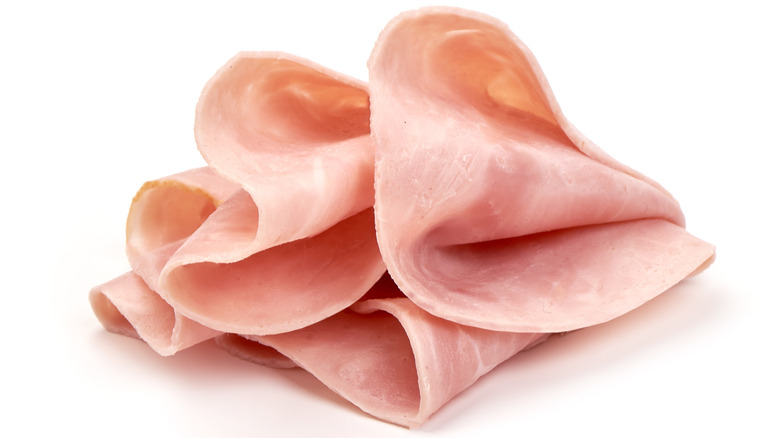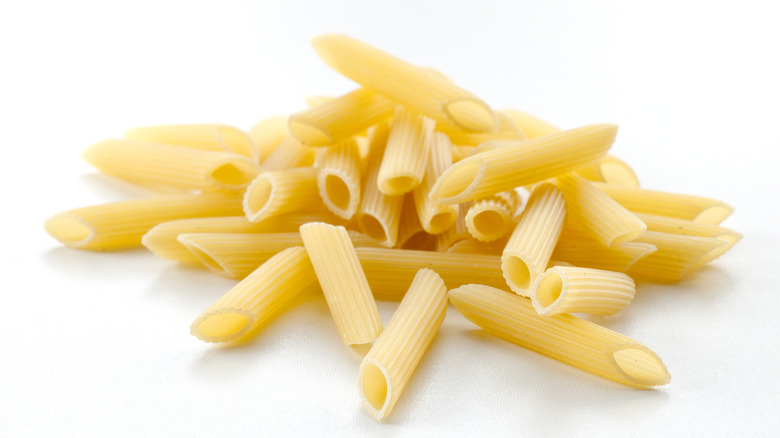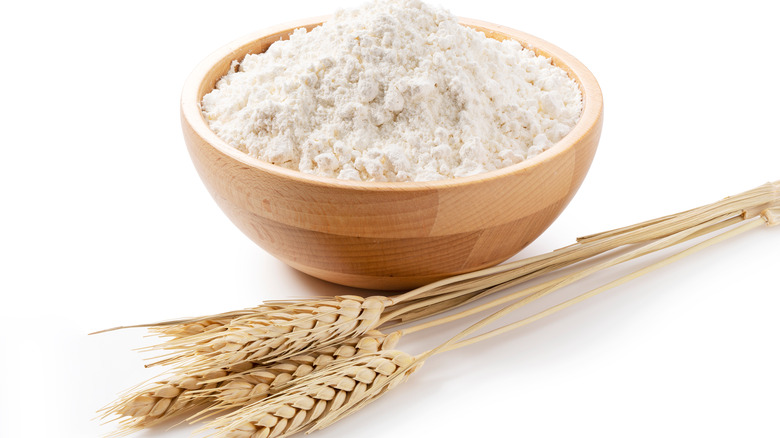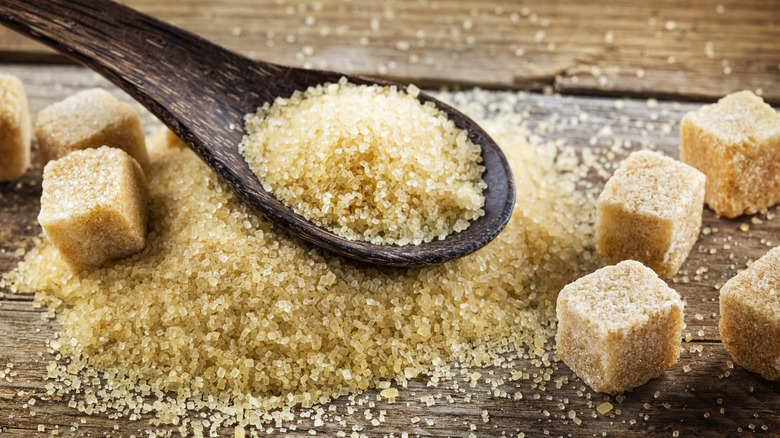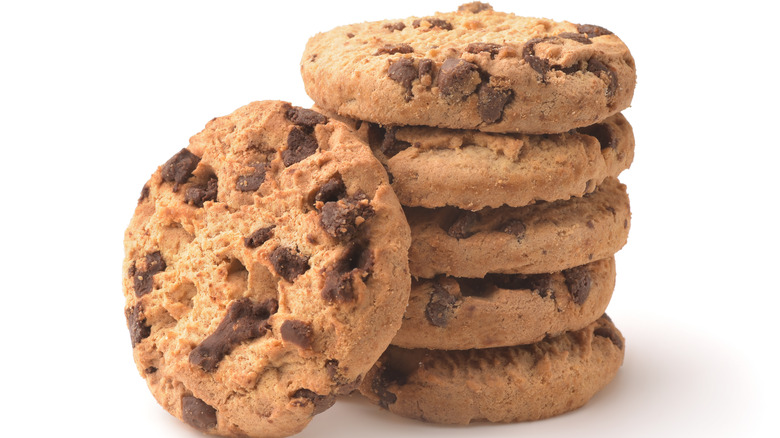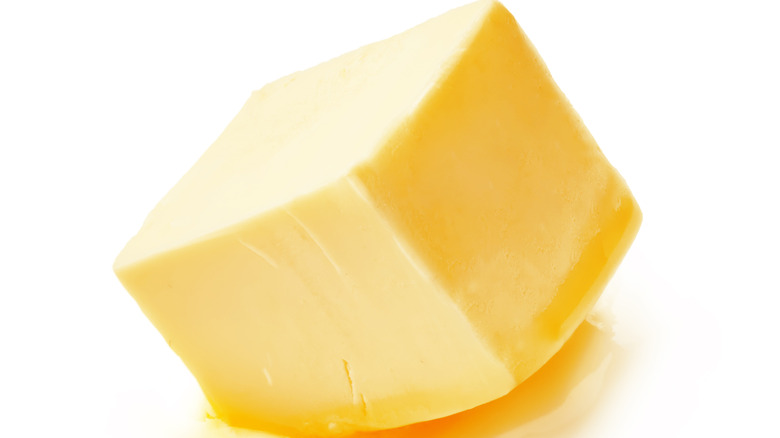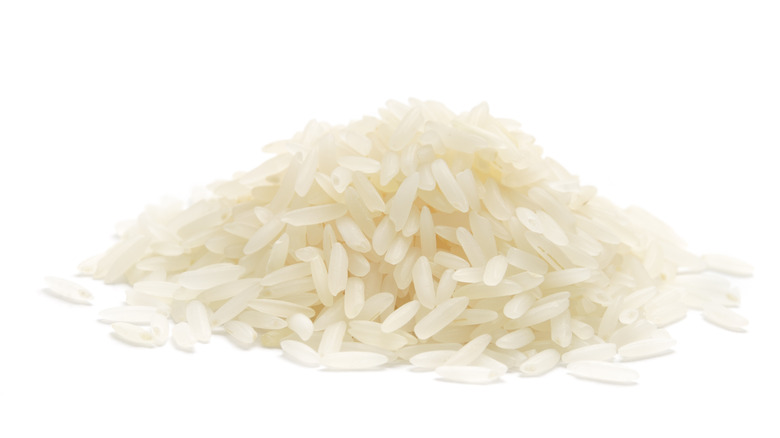12 Foods That Could Get More Expensive In 2023
One need not look too far to have noticed the eye-watering price hikes across grocery store aisles. From everyday staples like eggs, bread, and butter, to pantry treat favorites like chocolate chip cookies, food has gotten astronomically more expensive over the past few years. A global pandemic has created plenty of strain on supply chain operations across the globe, while inflation has led to everyone having to reconsider how far their budgets can stretch.
There are other factors that have had an effect on the food prices that consumers are currently contending with, ranging from animal disease outbreaks and labor shortages across various industries to natural disasters like droughts and floods. As such, price hikes within the food industry are merely a symptom of several ills within the global market. Which foods will only continue to get more expensive in 2023, and which will offer some reprieve? Here's a list.
Eggs
For many people, a fried or scrambled egg on toast is a simple, quick breakfast to get the day going. Moreso, it offers a mix of complex carbs, protein, and fat without too much effort. However, this simple morning pleasure has been exerting quite a harsh pinch on many pockets over the past couple of months. According to USA Today, in January 2022, the average price you could expect to pay for a dozen eggs was about $1.93. By December 2022, this figure had more than doubled with the average price sitting at $4.25. This is in large part due to the devastating Avian-flu outbreak that started to sweep across the U.S. early in 2022.
Reported to be a highly transmissible and deadly strain of bird flu, by December 2022, 43 million hens had been killed by the disease. While the bird flu's estimated mortality rate is between 90 and 100%, many farmers have also resorted to "depopulation" in order to control the spread of the disease across their own farms. This, in addition to the impact of inflation on distribution costs, has contributed to price hikes that may continue throughout 2023. In January 2023, the pricing trend continued with a dozen eggs costing $4.99 at Target and $6 at Walmart.
Butter
Without milk, there can be no butter. As such, one cannot explore the increase in butter prices without looking at the dairy industry as a whole. While a pound of butter may have cost you an average of $3.67 in January 2022, by September 2022, consumers were forking out up to $4.70, per CNBC. This was because overall, dairy production costs increased drastically. Further, the higher the weather temperatures rise, the less milk cows are able to produce, which results in less milk for farmers, which in turn means fewer supplies to make butter.
Additionally, according to CBS News, following the financial strains that came with Covid-19, many farmers within the cattle industry also took matters into their hands and "thinned" their herds. Of the milk supplies that have been available, it seems more have been siphoned toward the production of cheese rather than butter. This has further contributed to lower supplies in comparison to demand. It seems there will not be much reprieve during 2023, as temperatures are predicted to remain higher than what is optimal — particularly during the season when milking is most expected.
Chips
Once an easy, cheap snack to throw in a bowl before settling in for a movie on the couch, you now probably do a double-take when you see the price of your favorite chips in the store. In a breakdown of fan-favorite snack picks for the Super Bowl, CBS News revealed that the price of tortilla and potato chips went up by 11% between 2022 and 2023. The price increases on chips have been impacted by both the limited crop cultivation due to higher temperatures, as well as the spikes in vegetable and sunflower oil that have occurred as a result of Russia's war against Ukraine. Not only has this brought distress to consumers, but the grocery store owners who sell them have also had to deal with double takes at the prices.
This was the case between Loblaw – Canada's biggest grocer, and Frito-Lay – a subsidiary of PepsiCo Canada which produces popular chip brands including Cheetos, Doritos and Lay's. According to The Star, the company was implementing price increases so fast that the ink on deals between manufacturers and grocers was barely given room to dry before the next price increase had rolled around. While chain grocers may have a little more resources to stretch, it is no surprise that independent owners were most impacted by these price hikes. Especially when product prices increase at every notch in the supply chain.
Oranges and Orange Juice
Whether you like it fresh or as a mimosa over brunch, another crop that has gotten – and is expected to get progressively more expensive in 2023 — is oranges. This, in turn, has heightened orange juice prices. Florida has especially felt the pinch where this is concerned. In 2022, the state yielded the fewest orange crops it has seen since 1944. This is significant, given that the state usually supplies about 80% of all oranges that are used for the production of orange juice across the U.S. Prior to that, farmers in Florida had already been battling with citrus greening – a bacteria that attacks the fruit – for about 25 years. Moreover, the devastation of Hurricane Irma's impact has continued to reverberate through crop life since 2017.
In 2022 alone, there were multiple natural disasters that contributed to the abovementioned decrease in orange crops. Among these were Hurricanes Ian and Nicole, as well as the January freeze. Unfortunately, the nature of orange farming does not allow much leeway to swiftly recover from such setbacks. This is because orange trees usually only produce fruit after three years, and go on to bring in profit at the six- to nine-year mark. As such, an increase in prices now may only really just be the start of a new normal where this crop is concerned.
Potatoes
Given how much more expensive the prices of potato chips have become, it is no surprise that potatoes have become more and more expensive too. A data comparison showed that in 2019 you could expect to pay about $0.75 for a pound of potatoes. This had climbed to an average of $0.85 by 2020, and by 2022, up to $0.89 for every pound of white potatoes. While this may not seem all that significant when left to the cent, the figures between 2020 represent a 19.9% overall increase in the price of potatoes.
There are several reasons why the price of potatoes has increased so significantly, namely: weather conditions, production costs, and an increase in demand. Potatoes are notoriously sensitive to changes in climate conditions — as such, any droughts, heat waves, floods, and other natural disasters are likely to decrease the yield of potatoes within the available crops. Pair this with production costs that have increased due to inflation and higher consumer demands, and the prices hike up. Given how versatile potatoes are, and the ease with which they add bulk to any meal they are added to, one wonders what the alternatives here will be.
Ham
An easy deli staple to throw on a sandwich during the rush of a day, ham is another item that has recently skyrocketed in price over the past couple of years. While a pound of it may have set you back about $4.07 in 2019, by 2022, the price of a pound had gone up to $5.29. That is a whopping 30% increase over the span of just three years. Apart from inflation, price increases for most other items on this list come down to weather conditions and animal disease. This is not necessarily the case for ham.
Given that meat production relies on skilled employees – for instance, knife technicians to cut it off the bone – the production of ham has deteriorated as a result of labor shortages. According to Bloomberg, as more and more employees became absent due to Covid-related illnesses, production slowed down and thus tipped the demand versus supply pendulum. This, in turn, had an impact on the price of ham. Nevertheless, employees returning to work may not automatically mean lower ham prices, as inflation remains a factor.
Pasta
Few things are as comforting to the belly as a delicious bowl of pasta. Pasta is quick to prepare in a variety of ways, a great one-pot meal that can easily feed a group of family and friends, and has even been lauded as the key to stretching expensive ingredients. Unfortunately, it is yet another staple that has succumbed to skyrocketing prices in recent years. An article by The Guardian reported that following a widespread drought in Canada in 2021, the price of durum wheat – the primary ingredient in pasta – had surged by 90% over a single season. As a result, UK consumers were set to pay up to 50% more for pasta.
The trend has only continued since then. In February 2023, the BBC reported that while a 500-gram bag of pasta would have cost about 50p in 2021, consumers could now expect to pay about 95p. In the U.S. a pound of pasta was priced at about $1.09 in 2021, and this increased to about $1.43 over the course of 2022. Paired with the current complications around dairy product production, for UK consumers in particular, a simple bowl of mac and cheese is not exactly the cheap comfort food it may have been just a few years ago.
Flour
A primary ingredient in other forms of comforting baked goods, flour has also not been able to escape price hikes. According to The San Francisco Standard, 2022 brought along with it a 20% hike in flour prices. For bakery business owners who bought their supply in bulk, a 50-pound bag that cost $50 in 2021 had gone up to $67 within the span of a year. For the everyday consumer, retail price increases of various flours including premixes had gone up 22.7%.
While consumers may be able to forgo baked goods that are generally regarded as more of a treat or luxury, bread remains a staple food that most people consume on a daily basis. With the price of flour on the rise, market strategist Todd "Bubba" Horwitz has predicted that the price of a loaf of bread could hike up to $10 during 2023. Should this be the case, it seems even a simple sandwich could start to feel like a luxury for consumers across the U.S.
Sugar
Unlike sugar taxes that may sometimes be aimed at decreasing the rate at which consumers eat sugar, the recent price increases have to do with more than just tax. Per Food Business News, given the recent impact of weather conditions on Mexico's cane crops, sugar production has been on the lower end than expected. The U.S. has usually received 1.3 million metric tons of sugar from Mexico; however, the 2023 export capacity seems to be down by about 300,000 metric tons.
In addition to the atypical rain patterns that have resulted in lower yields, inflation has also had a negative effect on production costs. Particularly by way of diminishing farmers' capacity to recruit employees – and keep them in the workforce. In light of this, by April 2023, sugar prices had increased by about 24 cents for a pound, which according to CNBC, represents the highest spike over the past 11 years. The knock–on effect of this increase will roll over to price increases across the confectionery, processed food, and sweet beverage industries. As employers foot heightened labor bills to keep these products in the market, consumers will foot the overall bills with every treat they purchase.
Chocolate Chip Cookies
Every key ingredient needed to bake chocolate chip cookies — and to make them perfectly crispy on the outside and chewy on the inside — has increased in price, so it is no wonder then that the price of America's favorite cookies has surged so much. Never mind how much more expensive basic staples have become; increasing chocolate chip cookie prices are just disheartening. While the average a consumer could expect to pay for a pound of chocolate chip cookies was $3.49 in 2019, the price surged to $4.34 in 2022. Because the U.S. had a steady supply of cocoa during 2020, it may have mediated rising costs of other cookie staples, as there was only a $0.21 price increase during 2021.
However, the sharper increase came in 2022. On the one hand, U.S. cocoa supplies decreased by 20% while the demand increased, per the New York Post. On the other hand, lower cocoa crop yields in countries like Ghana resulted in price surges for this key chocolate ingredient. Further, global holidays like Christmas, Valentine's Day, and Easter are practically synonymous with chocolate, and with these massive surges in demand come even more price hikes.
Margarine
With significant price differences between margarine and butter, for many, the former could serve as an alternative when the latter became too expensive. Unfortunately margarine has recently not been much of a refuge from the heightened prices of butter, either. Part of the real reason the price of margarine has skyrocketed has been due to rapid increases in the price of vegetable oils like palm, soybean, and sunflower oils as a result of the war between Russia and Ukraine. Add to this Indonesia's palm oil export ban, and there is practically nowhere to turn.
According to CBS News, between 2021 and 2022, the price of margarine increased by 44%. With more people opting for margarine over butter, supply increased, hence driving the prices up even more. Per CBS4, the price of margarine will likely not be going down any time soon. It simply remains a waiting game that will rely on weather conditions that may better support the production of milk, and with that, the possibility of some reprieve where the price of butter is concerned.
Rice
Rice is the most consumed grain across the globe, and it seems the market may experience the worst rice shortage it has had in 20 years. Per USA Today, rice crop yields were affected by weather conditions in 2022. Among these were the flash floods in parts of China – where most of the world's rice supply is produced. While some regions had flash floods, others were devastated by severe droughts, while the rice crops in Pakistan were compromised by flooding. Given how widely-consumed rice is, with lower supplies, the demand is sure to be severely compromised.
According to CNBC, the shortfall is predicted to amount to 8.7 million metric tons. However, unlike most other items on this list that will only continue to increase in price, the current deficit is reportedly only temporary. Fitch Solutions has predicted that the global rice market may return to a state of surplus between 2024 and 2025, and with that, a decrease in prices. This is, of course, contingent on the weather conditions in the regions that produce most of the world's rice.
Static Media owns and operates Mashed and Tasting Table.
